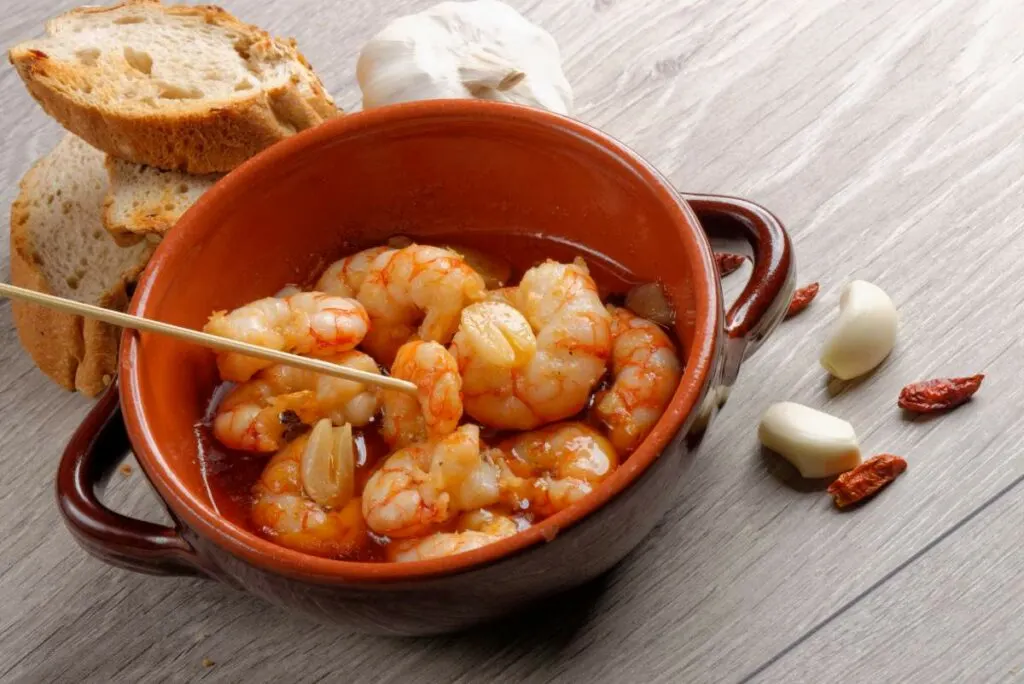Spanish tapas have become internationally renowned for their diverse flavors, small portions, and social dining experience.
People of all ages enjoy These delectable bite-sized dishes, enticing taste buds with their tantalizing combinations.
However, the origins of tapas are shrouded in myths and legends.
What are Spanish tapas?
Before delving into the myths, let’s understand what Spanish tapas are.
Tapas are small, savory dishes typically served with drinks, encouraging a relaxed and communal dining experience.
They originated in Spain and have since gained popularity worldwide. Tapas offer various flavors, from traditional Spanish ingredients to creative fusions, making them a favorite among food enthusiasts.
Myth 1: Origin of Tapas from King Alfonso X
One of the most famous legends surrounding the origin of tapas revolves around King Alfonso X, who ruled Spain in the 13th century.
According to the myth, Alfonso X fell ill and was advised by his physicians to have small bites of food accompanied by wine between his meals.
This practice, it is said, helped him regain his health. To express his gratitude, the king ordered all taverns to serve small plates of food with wine, leading to the birth of tapas.

Myth 2: Origin of Tapas from Covering Wine Glasses
Another intriguing myth suggests that tapas’ origin lies in covering wine glasses with a slice of bread or a piece of ham.
In the past, wine drinkers would use these coverings to protect their drinks from fruit flies or dust.
The savory aromas from the bread or ham would also enhance the flavor of the wine. Over time, this simple practice evolved into serving small plates of food alongside the drinks, ultimately becoming tapas.
Myth 3: Origin of Tapas from Health Benefits
In yet another captivating tale, Spanish tapas are believed to have originated as a remedy for illness.
During the Middle Ages, when various diseases plagued Spain, people consumed small portions of food throughout the day to maintain their strength and ward off sickness.
This practice eventually merged with the tradition of serving appetizers in taverns, leading to tapas as we know them today.

Myth 4: Origin of Tapas from Inns and Taverns
Another myth surrounding tapas’ origin takes us back to the year 1915.
One evening, Manuel Ruiz Romero, a wealthy castle owner from the charming town of Xaém, went to a local casino with his friends and ordered drinks from the nearby bar.
He had a unique request – he wanted his glass covered with slices of ham to prevent his drink from being exposed to wind and dust.
The next day he ordered the same thing, but this time he asked the waiter to cover his drink with cheese.
Legend says that on the third day, the waiter shamelessly turned to Manuel and asked: “And today, what should I use as a lid (tapa)?”
Myth 5: Origin of Tapas from Spanish Geography
The final myth we explore ties tapas’ origin to Spain’s diverse geography.
Each region of the country has its culinary traditions, and tapas are no exception. The story goes that tapas originated in different regions simultaneously but with distinct variations.
From the seafood-centric tapas of coastal areas to the meat-based tapas of the inland regions, tapas became deeply rooted in the culinary fabric of Spain.

The cultural significance of tapas
Tapas are deeply ingrained in Spanish culture, reflecting the country’s social and communal dining traditions.
Spaniards often gather with friends and family at tapas bars, enjoying a leisurely evening of conversation and shared plates.
Sharing tapas fosters a sense of togetherness and camaraderie, reinforcing the importance of community in Spanish society.
Popular tapas dishes
Spanish tapas encompass a vast array of dishes, each with its own unique flavors and preparations.
Some popular tapas include:
- Patatas Bravas: Crispy fried potatoes served with a spicy tomato sauce.
- Tortilla Española: A classic Spanish omelet made with eggs, potatoes, and onions.
- Gambas al Ajillo: Succulent shrimp sautéed in garlic-infused olive oil.
- Albóndigas: Flavorful meatballs served in a rich tomato sauce.
- Croquetas: Creamy and crispy croquettes filled with ingredients like ham, cheese, or mushrooms.
The myths surrounding the origin of Spanish tapas add a touch of intrigue and mystique to this beloved culinary tradition.
While the exact origin remains uncertain, tapas have undoubtedly become an integral part of Spanish culture and cuisine.

Frequently Asked Questions
Are tapas only served in Spain?
While tapas originated in Spain, they have gained popularity worldwide, and you can find tapas-inspired restaurants in many countries.
Can tapas be a complete meal?
Tapas are traditionally enjoyed as appetizers or small plates. However, by ordering a variety of tapas, you can create a satisfying and diverse meal.
What is the difference between tapas and pintxos?
Pintxos are similar to tapas but are rooted in the Basque region of Spain. They are typically served on top of a slice of bread and secured with a toothpick.
Can vegetarians and vegans enjoy tapas?
Absolutely! Tapas offer vegetarian and vegan options, including patatas bravas, grilled vegetables, and marinated olives.
